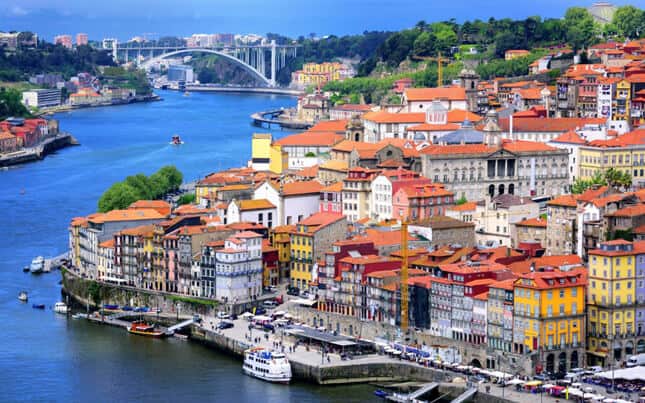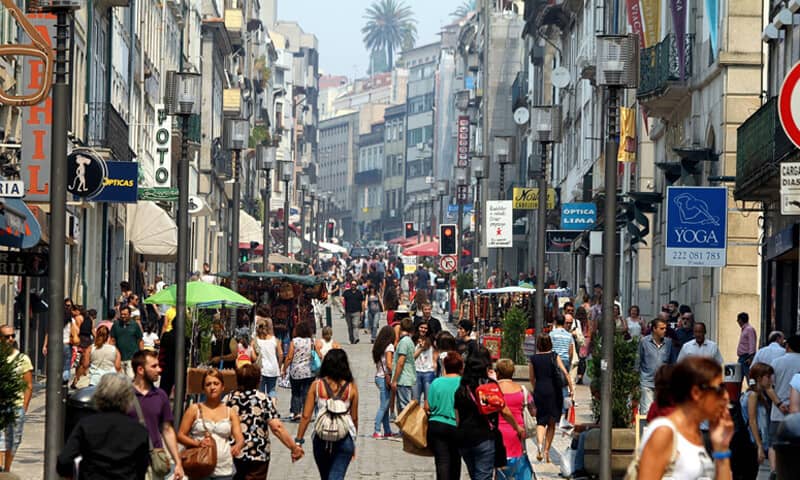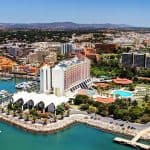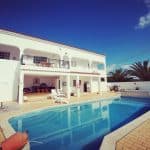
Porto – Portugal’s 2d city
Porto has all the ingredients for a lovely long weekend. Portugal’s second largest city (pop. just over 300,000) occupies a magnificent site. Its picturesque houses cling to the banks of the Douro, the legendary river that ends here in the Atlantic after its long course through Spain (where it is called the Duero) and Portugal. UNESCO declared the historical centre of the city a World Heritage site in 1996.
Stay in or near the Avenida dos Aliados, which is a very centrally located large, open space, book-ended by the imposing Paços do Concelho at the north end and the Praça da Liberdade at the bottom.
Within walking distance are most of Porto’s most interesting sites. The Rua de Santa Catarina, with the city’s smartest shops and the famous Café Majestic, is just three blocks east of the town hall, just after the colourful Mercado Municipal de Bolhão. The São Bento train station, with its beautiful blue tiles, is on the way to the massive cathedral and its adjacent cloisters. From there you can wend your way downhill, via an interminable stone stairway, to the north shore of the river, the Cais da Ribeira, where a large number of jolly restaurants will vie for your lunch trade.
After lunch, walk across the Ponte D. Luís I, the most spectacular of Porto’s bridges. Built in 1886, it is the symbol of Porto and is itself a World Heritage site. On the south bank, you will technically be in Vila Nova de Gaia, where more than 58 port wine lodges (of which 20 of the best known are open for guided tours and tastings) and many excellent restaurants can be found. The view back across the river of old Porto is absolutely breathtaking, especially if the sun is shining.
Porto is famous for its technically outstanding bridges linking the north and south banks of the Douro. From the D. Luís I you can look upstream to see the Ponte da Arrábida, opened in 1963, boldly crossing the river in a single reinforced concrete span of nearly 270m, and, further on, the Ponte D. Maria, a very graceful railway bridge designed by the French engineer Eiffel in 1877.
Other interesting sites, not to be missed, include the Torre dos Clérigos, Porto’s most visible and characteristic monument which, in the old days, served as a visual beacon for ships, the Igreja de São Francisco (especially if you like the Baroque period) and the Fundação de Serralves, which includes the Museu de Arte Contemporânea and a magnificent 44-acre park.

Porto is also known for its excellent restaurants, and we found several. O Rápido is just around the corner from São Bento. The menu is limited but the food is excellent and the service very friendly. O Restaurant da Alzira is on the Aliados and is very popular. Rabelos is a lovely restaurant for dinner, located amongst the port lodges in Vila Nova de Gaia, and with a great view of the Douro and old Porto from the first floor. We had lunch one day at Molhe, an outdoor beach restaurant on the Atlantic Coast in Foz, a suburb of Porto.


